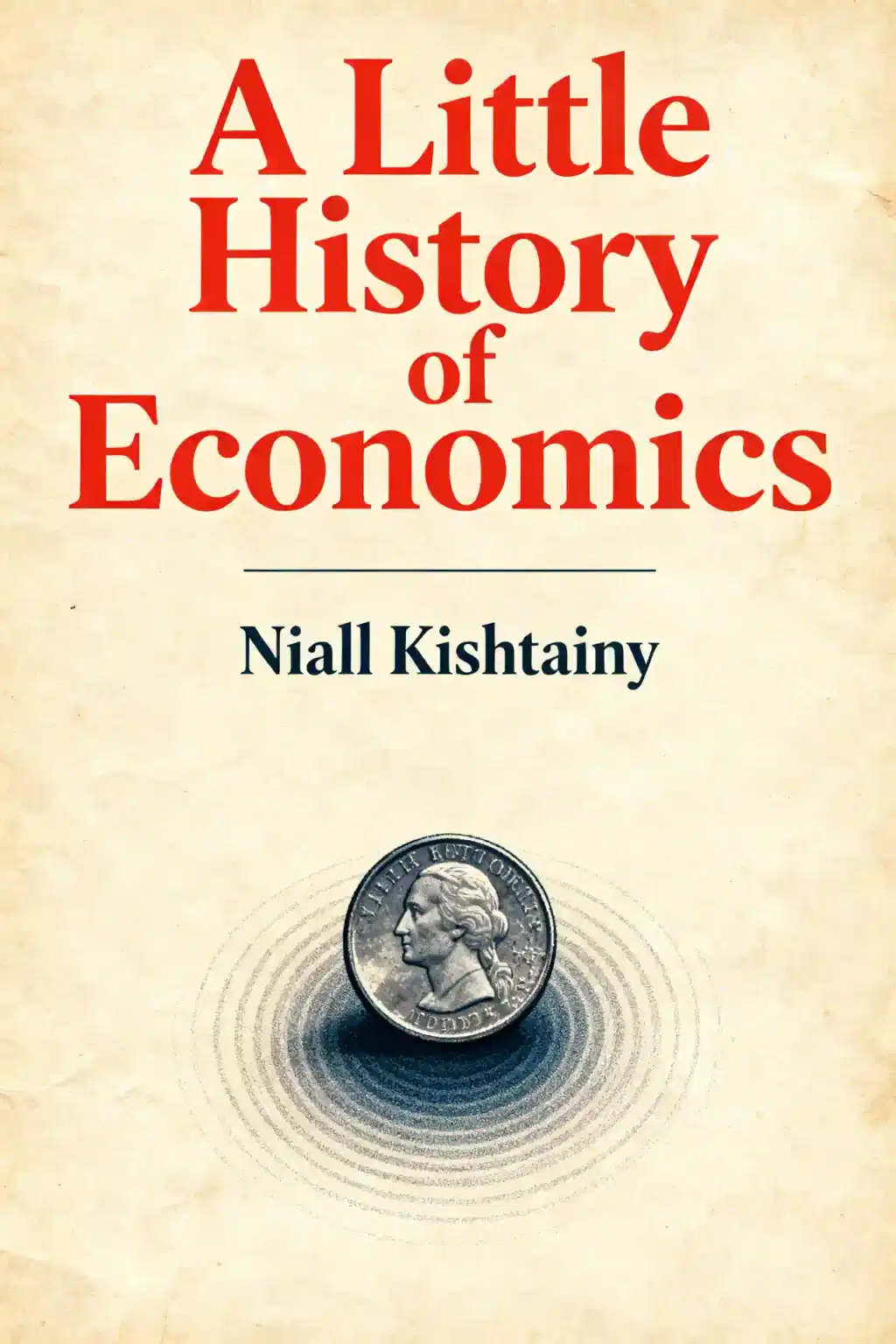What is
A Little History of Economics by Niall Kishtainy about?
A Little History of Economics traces the evolution of economic thought from ancient times to modernity, blending key ideas from thinkers like Adam Smith, Karl Marx, and John Maynard Keynes with pivotal events such as the invention of money and the Great Depression. Written in an accessible, journalistic style, it demystifies complex theories while highlighting their real-world impacts.
Who should read
A Little History of Economics?
This book is ideal for high school or college students studying economics, general readers seeking a jargon-free introduction to economic history, and lifelong learners curious about how ideas like capitalism or behavioral economics shape societies. Its engaging narrative suits those who prefer storytelling over technical analysis.
Is
A Little History of Economics worth reading?
Yes—the book distills centuries of economic theory into concise, relatable chapters, making it a valuable primer for newcomers. Critics praise its crisp writing and ability to connect historical contexts to modern issues like inequality and financial crises.
What are the main concepts covered in
A Little History of Economics?
Key topics include:
- The origins of money and trade
- Capitalism’s rise and critiques (e.g., Marx’s theories)
- Government intervention vs. free markets
- Behavioral economics and psychological influences
- Global issues like poverty and economic development
How does
A Little History of Economics explain economic crises?
Kishtainy examines crises through historical lenses, such as the Great Depression, to show how economists like Keynes advocated for government stimulus. He also explores recurring debates about market instability and regulatory responses, linking past ideas to modern policy challenges.
What makes
A Little History of Economics unique compared to other economics books?
Unlike dense textbooks, Kishtainy emphasizes storytelling and excludes complex math. The book’s brevity and focus on diverse thinkers—including marginalized voices—offer a fresh perspective on how economic ideas intersect with social and political contexts.
Does
A Little History of Economics address critiques of traditional economic theories?
Yes. While celebrating milestones like Adam Smith’s Wealth of Nations, Kishtainy critiques gaps in classical theories, such as ignoring gender disparities in resource allocation and undervaluing unpaid labor (e.g., childcare). He also highlights modern behavioral economists who challenge rational-choice models.
What is Niall Kishtainy’s background in economics?
Kishtainy holds a PhD in economics and has advised governments (UK, Albania) and international bodies (UN, World Bank). His experience as a journalist and policy consultant informs his ability to translate academic concepts into engaging narratives.
How Eurocentric is
A Little History of Economics?
While the book prioritizes European thinkers and events, it acknowledges global perspectives, such as developmental challenges in Africa and the Middle East. Critics note its focus on Western figures but appreciate efforts to contextualize ideas within broader historical movements.
Can
A Little History of Economics help readers understand current economic issues?
Absolutely. Kishtainy connects historical theories to modern debates, such as universal basic income, climate economics, and post-pandemic recovery. The book underscores how past innovations and failures inform today’s policy decisions.
How does the book simplify complex economic ideas?
Kishtainy uses relatable analogies (e.g., comparing market cycles to natural ecosystems) and avoids jargon. Chapters are short and thematic, often ending with open-ended questions to encourage critical thinking.
What are criticisms of
A Little History of Economics?
Some scholars argue it oversimplifies certain theories (e.g., Keynesian economics) and underrepresents female economists. However, most praise its balance between depth and accessibility, particularly for non-specialists.
How does
A Little History of Economics compare to
Economics in One Lesson by Henry Hazlitt?
While Hazlitt focuses on free-market principles, Kishtainy’s work is more historical and pluralistic, exploring competing ideologies (socialism, behavioral economics). Both avoid technical language, but Kishtainy offers a broader survey of thought.
What lasting lessons does the book emphasize?
Three key takeaways:
- Economic ideas evolve through societal challenges.
- No single theory solves all problems—context matters.
- Everyday decisions (saving, spending) are shaped by centuries of economic debate




















